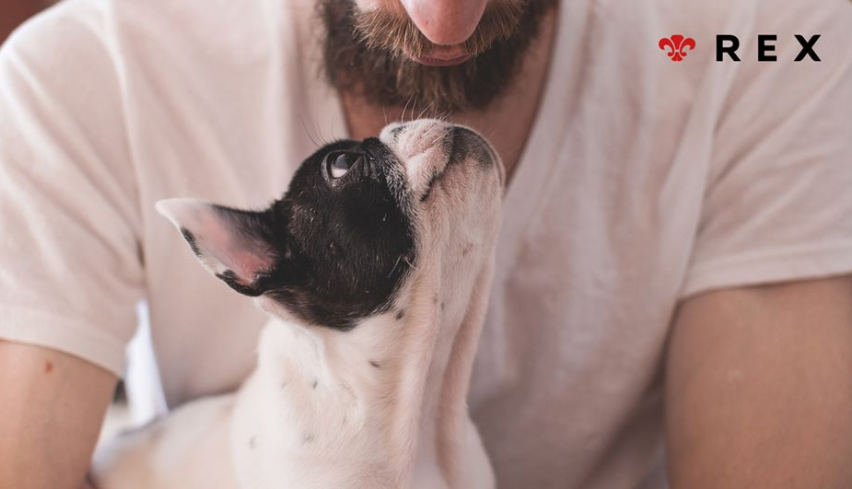The Internet has multiplied infinitely the invented data that is taken as true after becoming popular.
With this post we want to dismantle 14 great myths about dogs and cats that we are sure you have heard on more than one occasion. You will like!
- Dogs heal by licking their wounds
I wish it were so and we could save ourselves the bad drink that many of the animals with which we share our life go to when we go to the vet, but unfortunately it is false. If you see your dog lick a wound, what he is doing is cleaning the dirt from the area. Be careful when you do it in excess, because it could be making healing difficult or acral dermatitis caused by constant licking. For this reason, Elizabethan necklaces are usually used after medical interventions.
- One year of dog equals seven human years
Be sure you’ve heard it a thousand times! And it’s not true either. Although dogs age faster than people, we cannot compare their age with ours regardless of their size, weight, and even breed. What is certain is that we are talking about an adult dog after two years and an old dog when it is over nine. In general, small dogs tend to live longer than large dogs, but calculating an equivalence to humans does not make sense.
- Dogs see in black and white
Well, it won’t be either! Dogs distinguish colors as different as blue and yellow, although they cannot distinguish between those that are as similar as red and orange, which they often perceive as a variation of gray or yellow. Although it is true that their color range is smaller, it is also true that their twilight vision is excellent, that they capture movement much better than humans and that their field of vision can reach 250 degrees, while ours is limited at 180.
- They wag their tails because they are happy
Actually, this is not always the case. Although next to the ears the tail is the part with which the dogs express their emotions the most, they can also wave it in situations that cause anxiety or fear and even release its aroma for reproductive purposes.

- If a dog has a dry nose it is sick
A dog with a dry nose can be perfectly healthy. If you doubt the health of your dog, it is best that you go to check your vet, but guide you by false beliefs like this will not help. Your dog may have a dry nose after a long nap or due to the heat without causing an alarm signal.
- Dogs don’t sweat
They do it, but in a different way than we do. Although they do not have sweat glands in their epidermis, they do accumulate them in the pads of their legs, which is why you often notice that they have a strange smell on them and that they leave wet tracks on summer days or after a major effort. They also expel heat through the tongue, evaporating water and thus cooling your body.
- Dogs’ mouths are much cleaner than ours
Actually, its mouth can have the same number and even more bacteria than people’s, since in addition to eating, your dog constantly licks and bites objects. Hence, many people brush their teeth sporadically to avoid bad breath.
- There are naturally dangerous dogs
Despite labels like PPP’s, the reality is that no dog is born dangerous. How many times have you seen tiny dogs with a devilish character? Although a pit bull and a Doberman have more strength and muscle, the behavior of these dogs is the responsibility of the education they receive from the people they live with.
- Dogs can eat the same as humans
Many products that we have at home can be dangerous for them, so we are facing another myth. Chocolate can kill a dog from caffeine and theobromine, grapes and raisins can cause gift injuries, while onion and garlic can damage its red cells.
- Pedigree breed dogs are healthier
Negative! Any dog can have a health problem. In fact, breed dogs often suffer from their own inherited diseases, while crossbreeds have different ways of responding to the disease in their bodies.
There are some esoteric myths about cats that we will not go into to assess because they dismantle themselves (cats have 7 lives, absorb negative energy, black cats attract bad luck, etc.). However, just like with dogs, there are other myths, not so outlandish but equally false, that have deeply penetrated the beliefs of society. We will mention some of them that perhaps make us rethink how easy it is for a myth that is not accompanied by any real evidence to settle in the collective mind as something valid.
ABOUT CATS
- We know that cats have a great ability to fall on their paws when they fall, something we tend to associate with not suffering bodily harm from falls. Well … Not true. When the fall is large, they can be damaged, since it is not the same to fall from 3 meters to 10 meters. In fact, cases of cats that do not dare to go down from the tree they have climbed on are relatively common, is not it? ? However, if they could not suffer damage, why should they fear falling?
- Another deep-seated myth (almost as much as the fact that bones are part of the diet of dogs) is that it should be normal for cats to vomit fur balls. Quite the contrary, when this happens we should go to the vet to make sure that the hair is not causing intestinal problems and, of course, to find out what are the nutritional problems that are causing this situation.
- Since we are talking about food, we must point out that cats do not eat mice (unless they are wild cats, which is not the case with our pets). On the other hand, although they can drink milk and benefit from its fat, the truth is that they do not particularly like it and lactose is indigestible. They drink milk out of habit because, as a general rule, since they were puppies their owners have never stopped giving it to them, and because the moment a human serves milk to a cat is like a ritual whereby the cat receives all the attention , what he loves.
- Another great myth is that the cat is always an untrained wild animal…. If this were true we would have a potential miniature killer in our homes, of course you can train! What happens is that cats, although they need the presence of their owners, have a much less social character than dogs and, therefore, we must take advantage of the moments when they want to be close to us to train them. Now, even after years of domestic life and training, cats still need long periods of solitude. It is precisely this individualistic behavior that has led us to think that the cat is treacherous or unfaithful; But in reality, what you usually want is to maintain your parcel of individuality. Only if we compare the behavior of the cat with the absolutely social behavior of the dog, we will consider that the behavior of the cat is antisocial or unfair …
Many times myths are just that, myths. But be careful, we should not be especially skeptical either becausewhen I know that where there is smoke there is fire…

